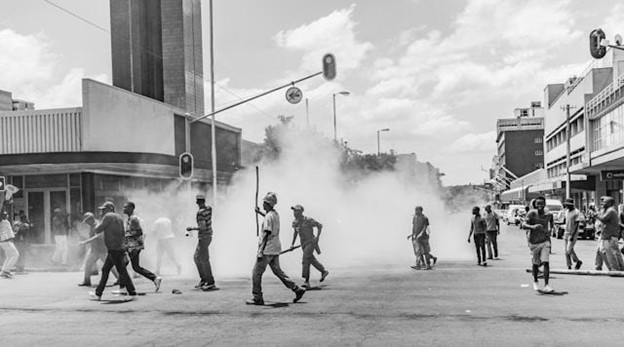On Monday, July 28, 2025, protests in Angola’s capital turned violent following a sharp diesel price hike, with local reports confirming at least three deaths, widespread looting, and a heavy police response. What began as outrage over economic pressures quickly escalated into full-blown chaos.
If you’ve been tracking fuel subsidy reforms across Africa, this moment in Angola shouldn’t come as a surprise. Still, the violence, scale, and human toll are prompting serious questions about how governments manage public backlash when belts tighten.
In July, Angola’s government hiked diesel prices by nearly one-third, part of a broader strategy to phase out fuel subsidies and stabilize its finances. The move triggered immediate outrage, especially from sectors that rely heavily on cheap fuel, like transportation.
Minibus taxi drivers, essential to Angola’s urban transit system, responded by raising fares by up to 50% and launching a three-day strike that began Monday.
From there, tension spread fast. Roads were blocked. Smoke billowed from burning barricades. Businesses shuttered. And by nightfall, violence erupted in Luanda.
According to Novo Jornal, a respected local outlet, at least three people were killed, including a police officer. Protesters clashed with security forces, and police responded with tear gas, smoke grenades, and live rounds fired into the air.
The police confirmed looting incidents across Luanda, but haven’t disclosed how many arrests have been made.
Footage circulating on social media shows burning tires, looted shops, and terrified residents fleeing street confrontations, painting a grim picture of a city on edge.
Angola is no stranger to fuel price unrest. A petrol hike in 2023 also sparked deadly protests. The underlying issue is economic strain: Angola is trying to reduce costly fuel subsidies, which made up about 4% of GDP in 2024, according to the finance ministry.
The government’s position? These subsidies are unsustainable and disproportionately benefit the wealthy. But for ordinary Angolans, especially those living paycheck to paycheck, the price hikes feel like a direct attack on their livelihoods.
In the words of one protester: “We can’t afford food, and now we can’t afford transport. What are we supposed to do? Walk to work and back 20 kilometers every day?”
So far, there’s no indication that the Angolan government will reverse or pause the fuel hike. Officials have consistently said subsidy cuts will continue in phases, no matter how painful.
But the challenge now is control, can the state manage public anger without further inflaming tensions?
The next 48 hours will be critical. Will the protests spread to other cities? Will government officials address the public? Will there be an independent investigation into the deaths?
Let’s see.
Angola’s unrest is part of a wider trend across Africa where governments are walking a tightrope, balancing IMF-backed economic reforms with intense pressure from citizens battling inflation, joblessness, and fragile wages.
We’ve seen similar eruptions in Nigeria, Kenya, Ghana, and Sudan. Subsidy removal is economically sound on paper, but politically explosive on the ground.
As Angola reels from another round of deadly unrest, the world is reminded yet again that economic reform without social cushioning is a recipe for turmoil.
The next moves by the Angolan government and the resilience of its people will shape not just the country’s fiscal future, but its fragile peace.



